
Dissemination and Development
Several factors supported the spreading of homoeopathy during the second half of the 19th century. Wealthy and prominent benefactors contributed to increase public recognition of homoeopathy. Their social standing drew the attention of wide parts of the population to it.
Since around 1870 the tens of thousands of members of lay societies accelerated the dissemination of homoeopathy,the German States of Württemberg and Saxony becoming the main centres.
During the last quarter of the 19th century some homoeopathic pharmacies began to produce their remedies on an industrial scale. By using modern advertising methods they gained more and more customers.
In the mid-19th century some German universities offered lectures on homoeopathy. But it was only in 1928 that a teaching position for homoeopathy was again assigned in Berlin.
For a time, the National Socialists in Germany incorporated homoeopathy as well as other non-orthodox healing methods into their health policy. Many homoeopaths hoped that this would bring them closer to the looked-for public recognition.
A number of wealthy and prominent personalities became generous supporters of homoeopathy after they had undergone successful treatment.
Julie Princess of Oettingen-Wallerstein (1807 – 1883) had met homoeopathy in Munich through her private physician. In 1883, her legacy helped finance the Homoeopathic Hospital in Munich
(1883 – 1912).
Robert Bosch senior (1861 – 1942) had been treated homoeopathically as a child. Having had to forsake his first project due to World War I he started a provisional hospital in 1921. In 1940 the newly-built Robert Bosch Hospital opened its doors. Up to the 1960s most German homoeopathic physicians were trained there.
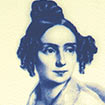
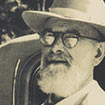
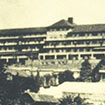
Between 1870 and 1933 there were several hundred homoeopathic lay societies in Germany, at first mostly in the states of Württemberg and Saxony.
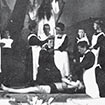
These lay organisations promoted the distribution and sales of remedies for self-medication and invited homoeopathic physicians to settle in their area. They also advocated the appointment of homoeopathic chairs at universities and the foundation of homoeopathic hospitals. In lecture evenings they informed their members about the homoeopathic approach to healing. Because these societies were among the most important buyers of their products the pharmaceutical manufacturers supported their educational endeavours.
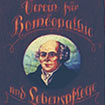
In 1933, the homoeopathic societies agreed to their alignment (Gleichschaltung) by the Nazis. Most of them ceased their activities during World War II. After the war several attempts at bringing the societies back to life in the German Democratic Republic failed. In the German Federal Republic the homoeopathic lay societies did at first not reach the same membership numbers as before the war, but their popularity has been growing again since the 1980s.
During Hahnemann’s lifetime many lay healers practised homoeopathy, including his second wife Mélanie Hahnemann and his pupil Clemens von Bönninghausen.
Baron Dr Clemens von Bönninghausen (1785 – 1864) was a lawyer and botanist. After having been cured homoeopathically of pulmonary tuberculosis he became Hahnemann’s pupil. Because of his successes as a lay healer he was granted permission to practise in Prussia in 1843 without having studied medicine. His most famous patient was the poet Annette von Droste-Hülshoff.
Mélanie d’Hervilly-Gohier (1800 – 1878) came to Coethen as Samuel Hahnemann’s patient and became his wife in 1835. After moving to Paris together they set up a practice which became highly renowned. From 1857, Mélanie Hahnemann practised together with her son-in-law, the physician Carl von Bönninghausen.
Arthur Lutze (1813 – 1870) arrived in Coethen in 1850 after an unsettled life as a post office clerk and homoeopathic lay healer. The Lutze Clinic which he founded continued to exist under various directors until around 1915.
The German lay practitioners’ law of 1939 gave the lay healers the recognition they had long waited for, but this professional group did not grow considerably after 1945. Only in recent years, with the growing distrust in apparatus medicine, their number has been rising again.
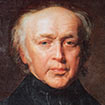
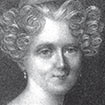
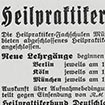
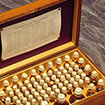
Almost everywhere in Germany physicians were forbidden to dispense drugs directly to their patients. Yet, the conventionally manufactured medicines often did not fulfil the requirements of the homoeopaths. From the 1830s homoeopathic pharmacies were founded which strictly adhered to Samuel Hahnemann’s instructions. These manually working enterprises were soon no longer able to meet the growing demand. From the end of the 19th century some of them began to produce on an industrial scale.
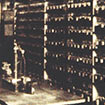
In 1866, the apothecary Willmar Schwabe (1839 – 1917) founded the pharmaceutical company Homöopathische Centralofficin Dr Willmar Schwabe in Leipzig. It grew quickly and opened branches worldwide. Also in 1866, he founded his own publishing business and published 200 scientific and popular books on homoeopathy. His Pharmacopoea homoeopathica (1872) still provided the basis for the official German Homoeopathic Pharmacopoeia of 1978.
Together with his brothers Hans and Friedemund, the pharmacist Dr Gerhard Madaus founded a pharmaceutical laboratory in 1919 which later relocated to Radebeul in Saxony.
Using sophisticated advertising, publishing activities and the organisation of further training courses for homoeopathic physicians, non-medical and lay practitioners, these companies opened up an ever growing market.
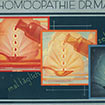
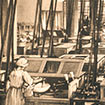
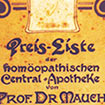
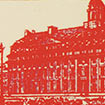
In 1883, earlier than in other European countries, statutory health insurance was established in Germany. Soon controversy broke out regarding the recognition of naturopathic and homoeopathic treatments by the health insurance companies. Almost all health insurers showed themselves very reluctant to accept homoeopathy in particular.
Saxony was the only state where the health insurance providers accepted the homoeopaths and agreed to pay for homoeopathic treatment. The local statutory health insurer in Leipzig also maintained seven beds in the homoeopathic hospital. In 1910 its board of directors strongly lobbied for the promotion of homoeopathy. Its president at the time was Dr Willmar Schwabe.
The costs of homoeopathic treatment, which is listed in the German Medicines Act as a special therapeutic approach, have been accepted by more and more health insurance providers since the 1990s.
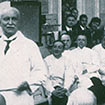
Despite its rejection by orthodox medicine, there have always been conventional physicians and scientists with a deeper and unprejudiced interest in homoeopathy. Prominent among them were the pharmacologist Hugo Schulz (1853 – 1932) and the surgeon August Bier (1861–1949).
After Hugo Schulz had studied the principles of homoeopathy in detail and spoken about them favourably in public, his colleagues began to ostracize him. August Bier sparked a heated debate when he asked in a paper published in 1925: What attitude should we have towards homoeopathy? The controversy did much to attract public attention to homoeopathy in the 1920s and 30s.
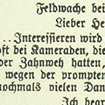
During the First World War many homoeopathic physicians were called upon to serve as medical staff in the army which meant that patients who were used to orthodox treatment became acquainted with homoeopathy. The pharmaceutical manufacturers offered specially developed homoeopathic field pharmacies during the war years, which were also sold for self-medication by the lay societies.
The Stuttgart Homoeopathic Hospital Association, supported by the lay society Hahnemannia in Württemberg, maintained a homoeopathic military hospital in Stuttgart from 1914 to 1919. Similar war hospitals existed also in other European countries.
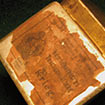
In Stuttgart unterhielt der „Verein Stuttgarter Homöopathisches Krankenhaus“ mit Unterstützung des württembergischen Laienvereins „Hahnemannia“ von 1914 bis 1919 ein homöopathisches Kriegslazarett. Ähnliche Lazarette gab es auch in anderen europäischen Staaten.
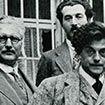
In the 19th century, applications to the parliaments of the German federal states of Baden, Saxony, Prussia and Württemberg to appoint homoeopathic chairs at the universities were rejected. Nevertheless it was possible up to the middle of the 19th century for individual lecturers and professors in Munich and Leipzig to offer homoeopathy lectures.
Around 1900 several local parliaments began again to look into the question. But only in 1928 the Prussian parliament agreed after long negotiations to grant a teaching assignment at the Friedrich Wilhelm University in Berlin. The physician Ernst Bastanier (1870 – 1953) took on this task and also became leader of the homoeopathic university polyclinic from 1929.
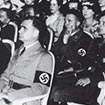
After seizing power the Nazis began to adapt the health system to their own ideology. In 1935, the leader of the Reich’s chamber of physicians, Dr Gerhard Wagner (1888 – 1939), founded a professional alliance for a new German medicine, which, next to various naturopathic methods, included also homoeopathy.
Many homoeopaths saw this as an opportunity to gain the long awaited public recognition. Like the representatives of other medical professional groups, homoeopathic physicians and lay healers allowed themselves to be taken in by the Nazis and showed themselves sympathetic to them.



